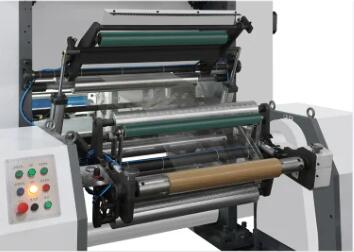Revolutionizing Industry: Advancements in 3D Printing Technology
2024-01-30
Introduction:
Over the past few decades, 3D printing technology has evolved from a novel concept to a transformative force in various industries. While it initially gained popularity for rapid prototyping and small-scale production, advancements in 3D printing have propelled it into the realm of industrial applications. In this blog, we will explore the cutting-edge developments that have reshaped 3D printing for industrial use, revolutionizing manufacturing processes across diverse sectors.
1. Material Innovation:
Early 3D printers primarily worked with plastics, limiting their applications in industrial settings. However, significant strides have been made in material innovation. Today, industrial-grade 3D printers can handle a wide range of materials, including metals, ceramics, composites, and even bio-compatible substances. This expansion of material options has broadened the scope of 3D printing across industries like aerospace, healthcare, and automotive.
2. High-Speed Printing:
Traditionally, 3D printing was perceived as a slow and time-consuming process. Recent advancements in high-speed 3D printing technologies have addressed this limitation. Industrial printers can now produce complex and large-scale components at significantly faster rates, enhancing efficiency in manufacturing workflows.
3. Large-Scale Printing:
The development of large-scale 3D printers has opened new possibilities for industrial applications. Companies can now manufacture substantial components, such as aircraft parts and architectural elements, in a single print job. This capability reduces the need for assembly and welding, streamlining the manufacturing process and minimizing potential points of failure.
4. Multi-Material and Multi-Color Printing:
Innovations in 3D printing technology now enable the simultaneous use of multiple materials and colors within a single print job. This advancement is particularly beneficial for creating intricate prototypes and functional parts with varying material properties, such as rigid and flexible elements in the same structure.
5. Improved Precision and Resolution:
Precision is paramount in many industrial applications, and recent advancements in 3D printing have significantly improved print resolution. Industrial-grade printers can achieve layer thicknesses in the micrometer range, resulting in highly detailed and precise components. This level of accuracy is essential for industries like healthcare, where intricate medical implants and prosthetics demand precision.
6. In-Process Monitoring and Quality Control:
Real-time monitoring and quality control are crucial in industrial settings. Modern 3D printers are equipped with in-process monitoring systems that allow for continuous observation of the printing process. This ensures early detection of defects or deviations, enabling manufacturers to maintain high-quality standards throughout production.
7. Integration with Industry 4.0:
The integration of 3D printing with Industry 4.0 concepts has brought about a new era of smart manufacturing. Industrial 3D printers are now part of interconnected systems, leveraging data analytics, automation, and IoT (Internet of Things) for seamless and efficient production. This integration enhances flexibility, customization, and overall productivity in industrial processes.
8. Bioprinting for Healthcare:
In the realm of healthcare, 3D printing has advanced into the field of bioprinting. This revolutionary technology allows the layer-by-layer printing of living tissues and organs using bio-inks and biocompatible materials. While still in the early stages, bioprinting holds immense promise for personalized medicine and organ transplantation.
Conclusion:
The rapid evolution of 3D printing technology has propelled it beyond its initial role in prototyping to become an indispensable tool in various industrial applications. With advancements in materials, speed, precision, and integration with smart manufacturing systems, 3D printing continues to redefine the possibilities in manufacturing, offering a glimpse into a future where complex components are created with unprecedented efficiency and customization.



